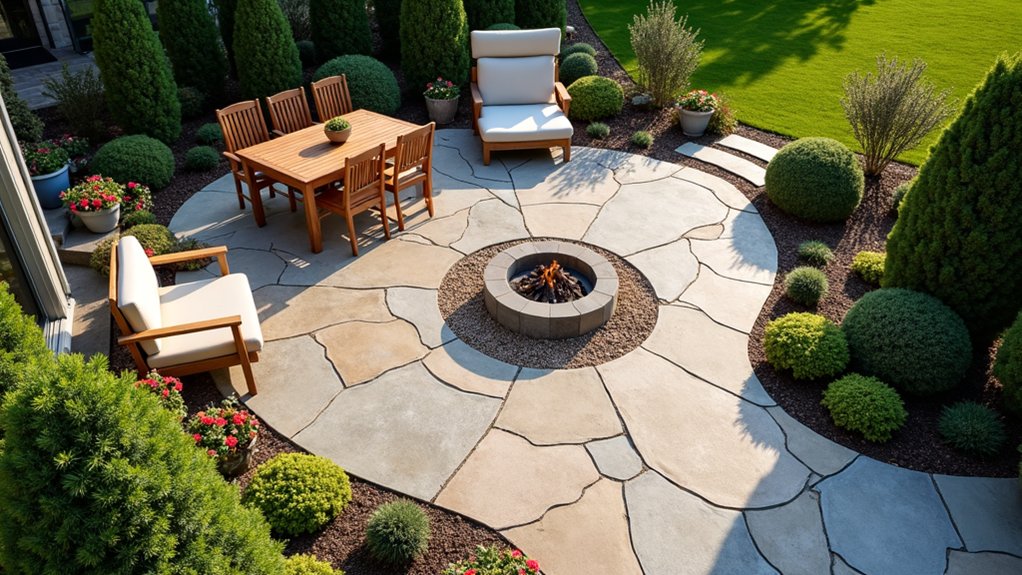Design your resin-bound patio for maximum space by first taking proper measurements and noting where the sun falls throughout the day. Keep footpaths at least 1 metre wide for easy access, particularly if you’re planning to wheel bins or garden equipment through. The non-slip surface should match your home’s exterior – popular UK choices include honey-coloured Cotswold stone or grey Yorkshire limestone. Install sturdy edging strips, such as aluminium or brick, to maintain clean borders and prevent the resin from cracking. Proper drainage is essential for our British weather – a permeable surface will handle heavy rain whilst meeting SUDS requirements. A well-planned design will serve you year-round, from summer barbecues to winter entertaining.
Key Takeaways
Essential Steps for a Resin-Bound Patio Design
- Take precise measurements of your garden and track the sun’s movement – morning to evening – to find the ideal spot for your patio. Most British gardens benefit from south-facing placement.
- Create a flat, stable base (typically concrete or tarmac) to prevent any wobbles or trips. Think billiard table smooth – that’s your target.
- Select quality resin that won’t yellow in our UK weather. Go for permeable options that’ll handle our frequent rain whilst matching your garden’s look, whether that’s a traditional cottage or modern minimal style.
- Install proper edging (aluminium or brick) to keep the resin neat and protected. It’s like giving your patio a smart frame that’ll last for years.
- Sort proper drainage – crucial for British weather. The surface should allow rainwater to soak through naturally, preventing puddles and helping local water tables.
Assessing the Space for Optimal Design
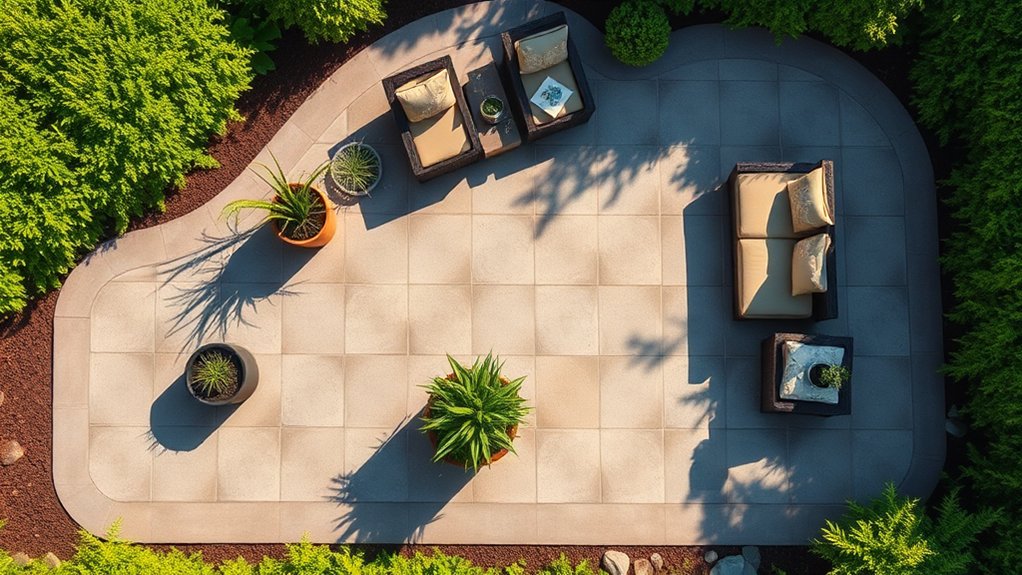
Before designing your perfect patio, take proper measurements of your garden space. A thorough assessment helps avoid costly mistakes later.
Check how sunlight moves across your garden throughout the day – vital for deciding where to place seating or perhaps a parasol. Look at existing features like mature trees or garden ponds that you’ll need to work around.
Your patio needs to complement nearby buildings and structures, so consider their style and position. Ensure the ground is solid and even – any wonky paving slabs or concrete cracks need sorting first. A proper assessment of ground stability is crucial to ensure a solid foundation for your patio, as a stable sub-base is essential for the durability of resin-bound installations.
Proper drainage is essential in our British climate; a slight slope will prevent puddles forming after rainfall.
A well-planned patio serves as a practical outdoor living space whilst adding value to your home.
Think about how you’ll use it – whether for morning coffee, summer barbecues, or container gardening – and plan accordingly.
Designing for Accessibility and Comfort
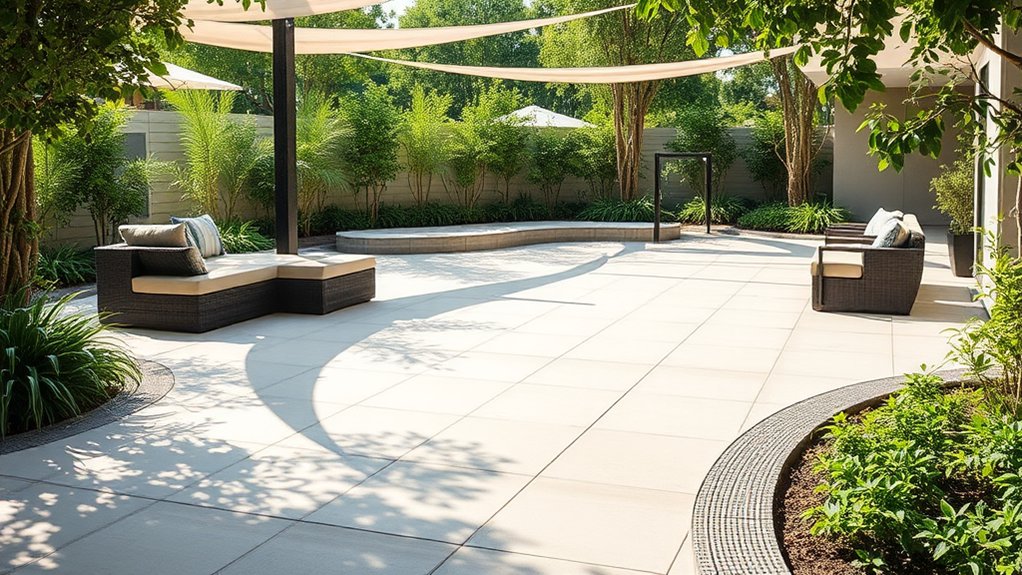
Designing a resin-bound patio? It’s vital to make it work for everyone. Start with a smooth, level surface and wide pathways that accommodate wheelchairs and walking frames. The non-slip qualities of resin-bound surfaces are brilliant in British weather, keeping everyone steady on their feet even during our notorious rainy spells. Ensuring a smooth and level surface is key to eliminating trip hazards and facilitating easy movement for all users. Additionally, resin bound patios are designed to last 15-20 years, providing long-term durability and value.
Create clear pathways at least 1.2 metres wide, free from obstacles year-round. Pop in a pergola or covered area – perfect for shelter from sudden showers or harsh summer sun. Use contrasting colours for steps and edges (think light grey against darker borders) to help those with sight difficulties navigate safely.
Add benches or built-in seating every few metres – they’re essential for elderly visitors or anyone needing a quick rest. Space them thoughtfully along the pathways, ideally with arm rests for easy standing.
A well-designed patio should work as well for gran with her walking stick as it does for kids on their scooters. Keep it simple, keep it practical, and everyone benefits.
Choosing the Right Materials and Colors
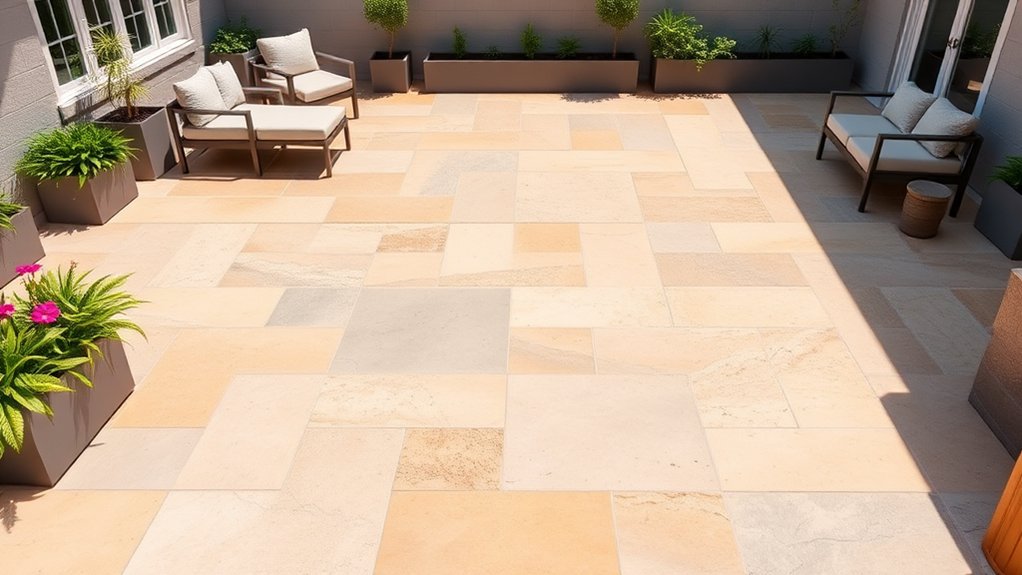
Choosing the right materials and colours for your resin-bound patio is straightforward. Natural stone or marble aggregates come in various shades, and both work brilliantly. For a timeless look, try combining light limestone with grey granite, or go bold with a mix of warm sandstone colours. Most UK homeowners opt for neutral tones like beige or grey, which match typical garden settings and house styles. The resin itself must be UV-stable and permeable – essential for our British weather. Think about your garden’s existing features; a cream-coloured aggregate works well with brick houses, whilst darker stones complement modern builds. A well-chosen combination will look smart and handle our weather whilst meeting current SUDS regulations for drainage, making it an environmentally friendly choice for water management. Additionally, using premium materials will enhance durability and longevity, ensuring your patio withstands challenging weather conditions.
Implementing Effective Edging Solutions
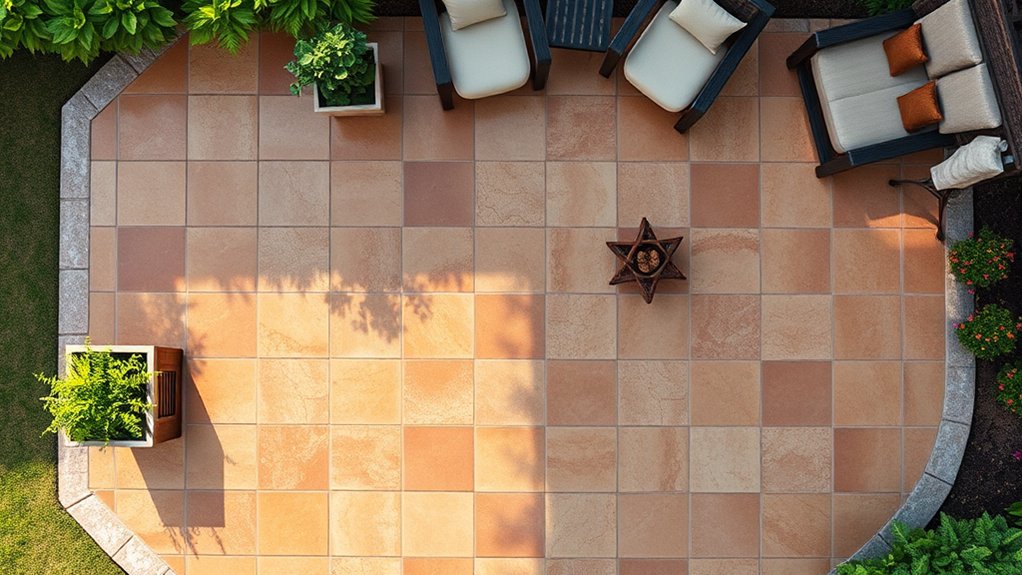
Choosing the Right Patio Edging
The perfect edging makes all the difference to a resin-bound patio, both in looks and practicality.
Three main options stand out for UK gardens:
Aluminium Edging
- Sleek, modern appearance
- Great value for money
- Won’t rust or deteriorate
- Popular in contemporary gardens
Block Edging
- Matches well with existing brick walls
- Stands up to British weather
- Needs minimal upkeep
- Creates clean, straight lines
Stone Edging
- Works brilliantly with period properties
- Blends with natural landscaping
- Ages beautifully over time
- Particularly suited to cottage gardens
Pick an edging that suits your home’s style and can handle our British climate.
A well-chosen edge will keep your patio looking smart whilst preventing the resin from cracking or splitting at the borders.
Enhancing Functionality and Sustainability
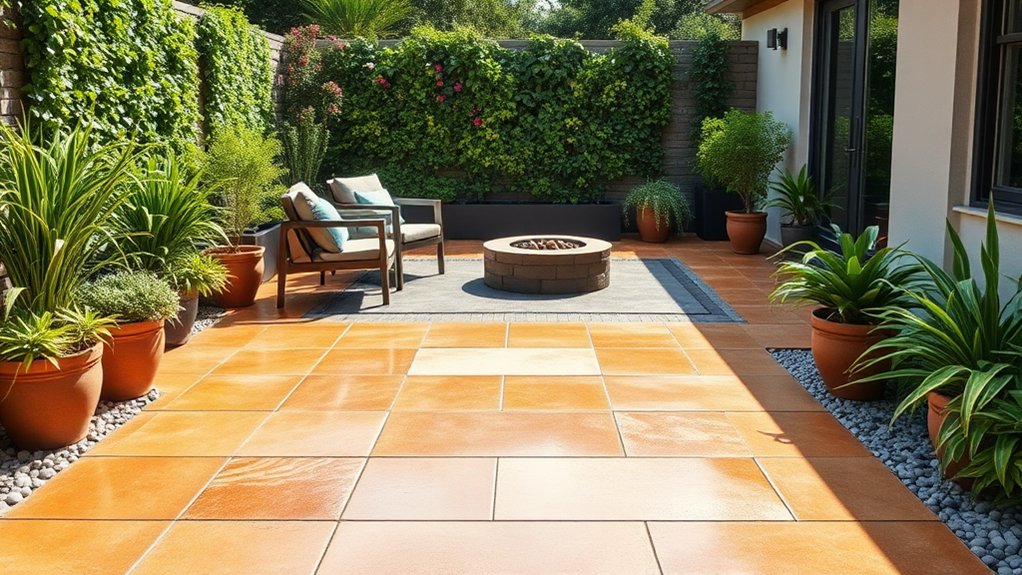
The right edging for your resin-bound patio boosts both looks and practicality whilst supporting eco-friendly garden design.
These surfaces naturally handle British weather, with rainwater draining straight through rather than pooling or flooding your garden. The non-slip finish means it’s safe for everyone, from toddlers to grandparents, even during our wet winters.
You won’t need to spend your weekends maintaining it – a quick sweep and occasional power wash keeps it looking fresh. Built to last, these patios handle everything from summer heat to winter frost without cracking or fading.
By choosing sustainable materials and proper edging, you’re creating a lasting outdoor space that works year-round for your family whilst being kind to the environment.
Think of it as an investment that adds value to your home whilst reducing your garden’s environmental impact – particularly useful in areas prone to flooding or where councils have strict drainage requirements.
Frequently Asked Questions
How Long Does a Resin-Bound Patio Typically Last?
A properly installed resin-bound patio lasts between 15 and 25 years, though many UK homeowners achieve up to 30 years with quality materials and regular upkeep. The key factors affecting longevity include professional installation, the quality of the resin mixture and proper drainage – all crucial elements in Britain’s varied weather conditions.
Can I Install a Resin-Bound Patio Myself?
Yes, installing a resin-bound patio is a DIY-friendly project for anyone with basic DIY skills and proper preparation. The key is to mix the resin correctly and work methodically. Essential tasks include thoroughly cleaning the base, ensuring proper drainage and carefully timing the resin application, as it sets quickly in warm weather. For best results, tackle the project on a dry day with temperatures between 5-25°C. Whilst professionals might complete a standard patio in a day, first-timers should allow a full weekend to ensure quality work.
What Is the Cost of a Resin-Bound Patio Installation?
The typical cost of a resin-bound patio in the UK sits between £3,000 and £6,000. Much like a kitchen renovation, the final price depends on crucial factors such as resin quality, surface area and ground preparation work. A basic 30m² installation might cost around £3,000, whilst a larger or more complex project could reach £6,000 or more. Material costs and proper groundwork make up the bulk of your investment, so it’s worth getting several quotes from local installers to budget accurately.
Are There Specific Weather Conditions to Avoid During Installation?
Best to avoid laying resin-bound patios in damp, humid conditions or when temperatures are particularly changeable. These weather factors can stop the resin from setting properly, which may cause the surface to become loose or uneven over time. A dry, mild day with stable temperatures is ideal for installation.
How Do I Clean and Maintain My Resin-Bound Patio?
Regular sweeping and gentle hosing keep your resin-bound patio looking its best. Tackle stains straightaway with mild soapy water, and avoid harsh chemicals that might damage the surface. Think of it like caring for a nice carpet – quick attention to spills and regular cleaning make all the difference. A good brush-down once a week and occasional pressure washing (on a low setting) should do the trick for most British weather conditions.
Conclusion
Through careful planning and smart material choices, a resin-bound patio can transform even modest outdoor spaces into practical, attractive areas. The seamless finish and range of colour options let you create a cohesive look that suits your garden’s style. Consider factors like drainage patterns and traffic flow to make the most of your available space. A well-designed resin-bound surface not only maximises usable area but also adds value to your property whilst requiring minimal maintenance—ideal for British weather conditions.
